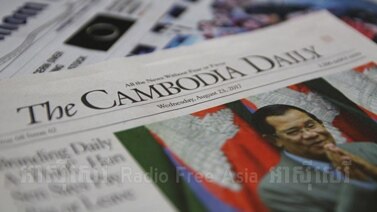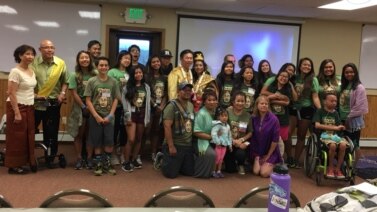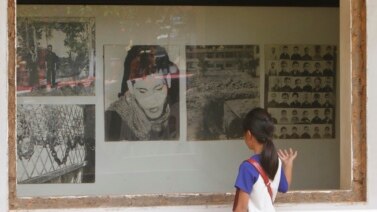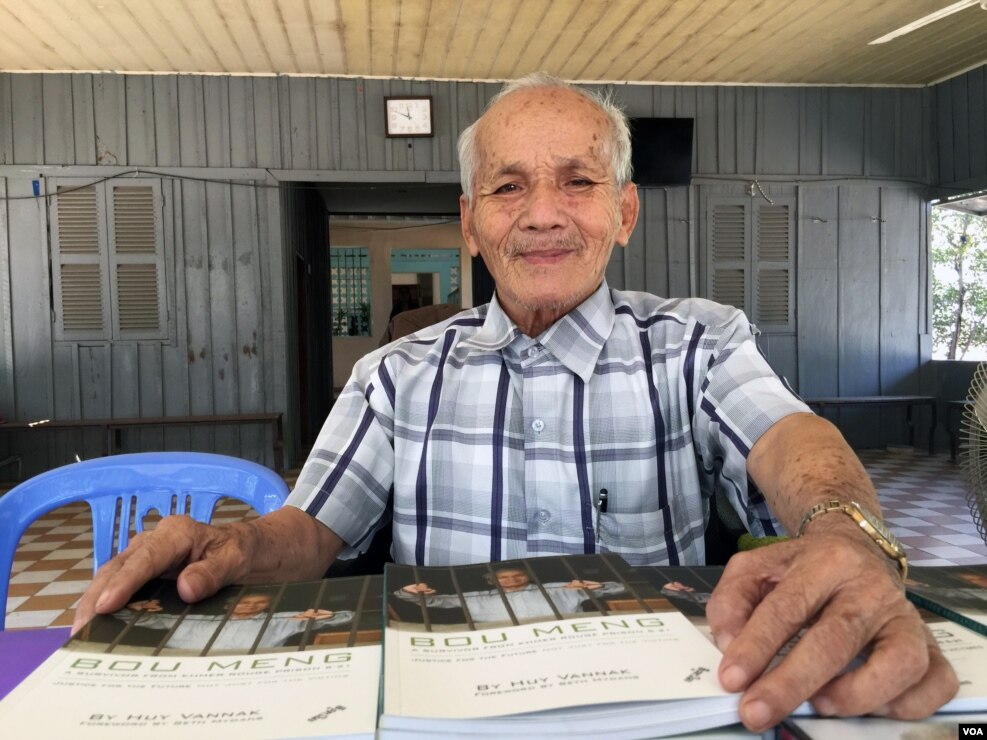
During the 21 months he spent in a Cambodian prison, Bou Meng strangely felt at ease in the clothing he wore.
Bou Meng was jailed in the late 1970s, when the Khmer Rouge ruled Cambodia. He was held at a secret, but now infamous Khmer Rouge prison called S-21.
Prison officials gave him black cotton shorts and, when he was lucky, a shirt for the upper half of his body.
“It was very cold at night, as I remember,” Bou Meng told VOA. Prisoners had no blankets to keep warm. Officials refused to let them have personal belongings.
The prisoners spent most of their days and nights tied to beds inside small rooms. Often they were released only to be tortured. About 14,000 people jailed at S-21 were later executed.
Bou Meng was one of the few prisoners to have survived. For him, the clothing brings back intense memories. They smelled really bad, he said. When he was tortured, “they would strip my shirt off,” he remembered. “My body was covered with blood.”
A museum shows objects from Cambodia’s genocide
Clothing similar to what Bou Meng once wore was left behind when the guards fled the prison. They left just before the Vietnamese invasion of Cambodia, in January 1979. Vietnamese forces ousted the Khmer Rouge government that year.
Later, Vietnamese administrators set up a genocide museum inside the former prison. They saved evidence of mass crimes, devices once used to torture prisoners and documents. But, the clothing was largely ignored.
All the prison uniforms sat untouched for 40 years. Many began to break down because of the effects of age, heat and wet weather.
Now all that is changing, as more Cambodians are recognizing the uniforms’ value.
The Cambodian Ministry of Culture now administers the Tuol Sleng Genocide Museum. Last month, the museum launched a project to protect up to 5,000 pieces of clothing. The United States government provided a grant of $55,000 to support the program.
For the first time, the clothes will be sorted, protected and, in some cases, shown to the public. They are part of the memorial to the 1.7 million Cambodians who were killed during Khmer Rouge rule, from 1975 to 1979. That number represents 25 percent of the country’s population at the time.
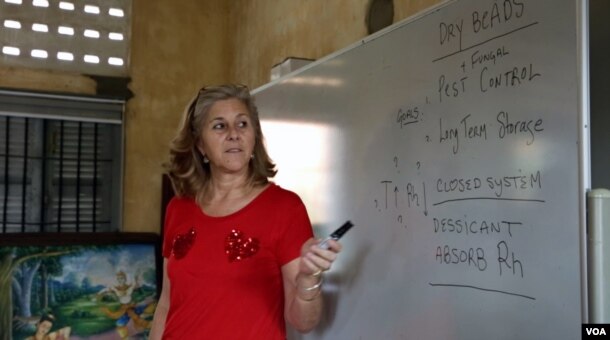
American Julia Brennan is heading the conservation project. She said the effort would use technology to ensure the uniforms are protected without removing the blood and other markings.
Brennan also helped Rwanda’s National Commission for the Fight against Genocide protect 45,000 cloth artifacts belonging to Rwandan genocide victims.
Brennan is working to set up a long-term storage system at Tuol Sleng Genocide Museum. She plans to use a technology called DryStore -- a see-through plastic container with two built-in hygrometers. These instruments help to keep objects dry and relative humidity levels low.
DryStore was developed in 2012 by Rhino, a technology provider for the agricultural industry. The company is based in Thailand.
The system uses desiccant beads that take in water while killing mold and insects. Until now, the beads have mainly been used for seed drying and storage.
Brennan has named the technology a “heritage box.” The museum is using the U.S. grant money to buy about 50 containers. Each one is large enough to protect 72 liters of cloth artifacts.

The first step of the project, Brennan says, is to test the heritage box system and develop a plan that can be followed after she leaves Cambodia. “The storage system is efficient, low cost, and simple to use,” she said. She added that if it is successful, it could show that the drying technology “can be applied everywhere for cultural heritage preservation, especially in humid climates.”
Every piece of clothing or textile item in the museum will also be photographed and documented. A detailed description of the clothing and its condition will also be included before being stored in the heritage box. All this information will be entered into a computerized collection database.
The textiles have been organized and are sitting in blue and red baskets, waiting to be documented and preserved.
Bou Meng said the program is important to him because it will allow future generations of Cambodians to see exactly what his uniform looked like. Although they are long gone from his possession, he still remembers the black shorts he wore.
He said, “They [the clothes] are a testimony to the genocide. Younger generations are going to certainly benefit from it, so that they know what happened here.”
I’m Jonathan Evans.
Soksreinth Ten reported this story for VOANews.com. George Grow adapted the report for Learning English. Mario Ritter was the editor.
Words in This Story
blanket - n. a piece of cloth used as a bed covering
item - n. object
strip - v. to remove clothing
grant - an amount of money that is given by a government or company to be used for a purpose
conservation - n. a careful protection of something
humidity - n. the amount of wetness in the air, or in the atmosphere
desiccant bead - n. something that causes a substance to dry out
mold - n. a growth caused by a fungus, usually caused by water or a break-down of organic material
preservation - n. the protection or safety of something or someone
database - n. a collection of information that is stored on a computer
We want to hear from you. Write to us in the Comments Section.
